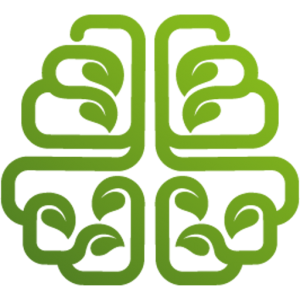 Join Us for CGC Year 8: Fire Infusion
Join Us for CGC Year 8: Fire Infusion
Enrollment is now open for Conscious Growth Club Year 8 – for one week only! Come join us for an intense and engaging year of growth. Our enrollment window closes May 1st at midnight Pacific Time. CGC's theme this year is Fire Infusion. Follow the link to see if you're qualified for membership. There are a LOT of surprises and upgrades to CGC this year.
Optimal Thinking
Optimal Thinking by Rosalene Glickman is a book I read about a year ago. I don’t recommend that anyone here read it because it’s one of those books that reads like an article padded out to the length of the book. You need only read the first chapter to absorb 80% of the book’s value. And I’ll give you that 80% right now, so you don’t even need to do that.
Here’s the concept of optimal thinking in a nutshell. Suboptimal thinking is when you ask questions like, “What’s a good/great way to do X?” or “How can I solve Y?” Optimal thinking is when you ask, “What’s the best way to do X?” or “How can I solve Y in the best way possible?” It may seem like a subtle and unimportant difference, but when you start applying this rule to your life, I think you’ll see some interesting results as I have.
For example, when planning your next day, you might ask yourself (perhaps subconsciously and nonverbally), “What’s a good way to schedule my time tomorrow?” And by answering that question, you’ll plan a decent schedule for yourself. But it’s most likely a suboptimal schedule. Try instead asking yourself, “What’s the best way to schedule my time tomorrow?” Now you’re seeking the optimal solution — the best instead of just good or even great.
Sometimes you don’t immediately know the best solution to a problem. So what you can do in that situation is to ask, “What will the best solution look like?” And then you start listing attributes and constraints that your optimal solution will need to exhibit. This helps you narrow your list of alternatives. If you know a particular attribute of the optimal solution, then you can reject all possible solutions that lack that attribute.
Going back to the example of the best possible scheduling of your day, you might list some of these attributes: awaken early, exercise, work at least 8 solid hours, eat healthy meals, spend time with family, do something fun and rewarding in the evening, stretch myself in some way, get email inbox completely emptied, read for an hour, etc. Then you can work backwards from these subgoals to piece together your optimal schedule.
Keep in mind that the best solution always takes into account the resources you have available. If a possible solution is impractical, then it certainly isn’t optimal. So if the best way to schedule your day would require a supercomputer and six hours of planning time, then that solution is far from being the best. You might wish to include your key constraints in your original question, such as, “What’s the best way to schedule my time tomorrow in 20 minutes or less?”
In my experience the most beneficial aspect of optimal thinking is that it helps you raise your standards. Instead of settling for suboptimal solutions and mediocre results, you commit to doing your best, yet in a way that’s practical and which considers the reality of your situation. Often when you ask yourself, “What’s the best …,” you’ll find your mind zooming towards a very different kind of solution than you would if you asked suboptimal questions.
Here are some sample optimal thinking questions to get your mind moving in that direction:
- What’s the best use of my time right now?
- What’s the best way for me to exercise regularly (when, what, how)?
- What’s the best way to get myself out of debt?
- What’s the best way for me to make an extra $10,000 as quickly as possible?
- What’s the best school for my child to attend?
- What’s the best place for me to live?
- What’s the best way to reply to this email? (use this one repeatedly to purge that clogged inbox)
- What’s the best way for me to improve my social life?
- What’s the best book I should read next?
- What’s the best new blog I should be reading regularly and tell everyone I know about?
Ask and you shall receive. Ask for the best.




